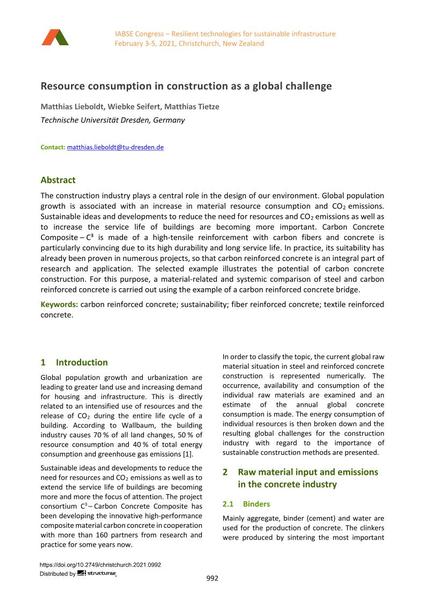Resource consumption in construction as a global challenge

|
|
|||||||||||
Bibliographic Details
| Author(s): |
Matthias Lieboldt
(Technische Universität Dresden, Germany)
Wiebke Seifert (Technische Universität Dresden, Germany) Matthias Tietze (Technische Universität Dresden, Germany) |
||||
|---|---|---|---|---|---|
| Medium: | conference paper | ||||
| Language(s): | English | ||||
| Conference: | IABSE Congress: Resilient technologies for sustainable infrastructure, Christchurch, New Zealand, 3-5 February 2021 | ||||
| Published in: | IABSE Congress Christchurch 2020 | ||||
|
|||||
| Page(s): | 992-999 | ||||
| Total no. of pages: | 8 | ||||
| DOI: | 10.2749/christchurch.2021.0992 | ||||
| Abstract: |
The construction industry plays a central role in the design of our environment. Global population growth is associated with an increase in material resource consumption and CO₂ emissions. Sustainable ideas and developments to reduce the need for resources and CO₂ emissions as well as to increase the service life of buildings are becoming more important. Carbon Concrete Composite – C³ is made of a high-tensile reinforcement with carbon fibers and concrete is particularly convincing due to its high durability and long service life. In practice, its suitability has already been proven in numerous projects, so that carbon reinforced concrete is an integral part of research and application. The selected example illustrates the potential of carbon concrete construction. For this purpose, a material-related and systemic comparison of steel and carbon reinforced concrete is carried out using the example of a carbon reinforced concrete bridge. |
||||
| Keywords: |
sustainability fiber reinforced concrete textile reinforced concrete carbon reinforced concrete
|
||||
